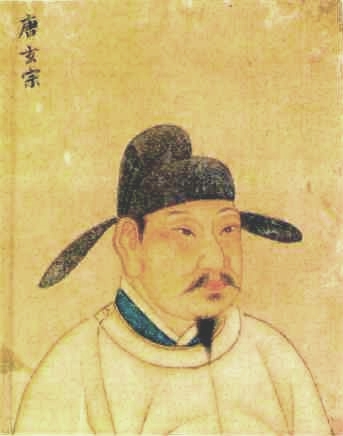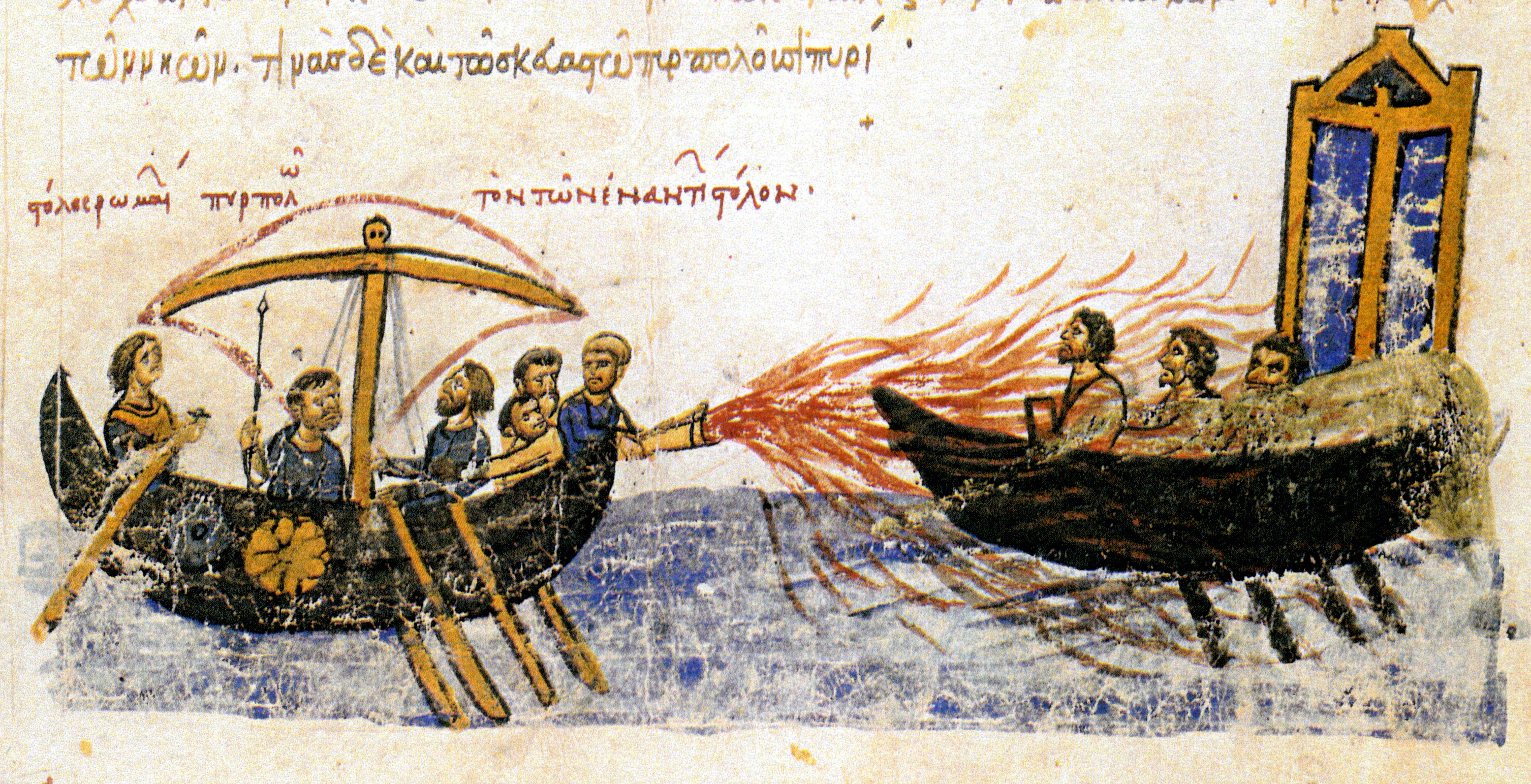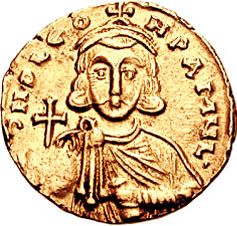|
730
__NOTOC__ Year 730 ( DCCXXX) was a common year starting on Sunday of the Julian calendar. The denomination 730 for this year has been used since the early medieval period, when the Anno Domini calendar era became the prevalent method in Europe for naming years. Events By place Europe * King Liutprand contracts an alliance with Eutychius, exarch of Ravenna, and agrees to support him in his attack on Rome, while subjugating the independent southern Lombard duchies of Benevento and Spoleto. * Tiberius Petasius proclaims himself emperor in Tuscia. Eutychius defeats him with the support of Pope Gregory II, and Tiberius is killed in Monterano, with his head sent to the Byzantine emperor Leo III as a gift. * Charles Martel defeats the last independent dukedom of Alamannia, and incorporates it into the Frankish Empire. He also launches raids on the Saxons beyond the Rhine. Arabian Empire * September–October – Umayyad forces sack the Byzantine fortress of Charsi ... [...More Info...] [...Related Items...] OR: [Wikipedia] [Google] [Baidu] |
Leo III The Isaurian
Leo III the Isaurian (; 685 – 18 June 741), also known as the Syrian, was the first List of Byzantine emperors, Byzantine emperor of the Isaurian dynasty from 717 until his death in 741. He put an end to the Twenty Years' Anarchy, a period of great instability in the Byzantine Empire between 695 and 717, marked by the rapid succession of several emperors to the throne, along with ending the continual defeats and territorial losses the Byzantines had suffered during the 7th century. He also successfully defended the Empire against the invading Umayyads and Byzantine Iconoclasm, forbade the veneration of icons. Early life Leo III was born in Germanikeia, Commagene, which is in modern Kahramanmaraş in Turkey. His original name was Konon (). Leo’s native tongue was Syriac language, Syriac or Arabic and he was described by Theophanes the Confessor as "the Saracen-minded," although there is very little evidence that he was directly influenced by Islam. After the victory of Ju ... [...More Info...] [...Related Items...] OR: [Wikipedia] [Google] [Baidu] |
Tiberius Petasius
Tiberius Petasius was a Byzantine usurper in Italy 730/731. History Very little of Tiberius life is known, other than that he was born Petasius, and that he revolted against the Byzantine Emperor Leo III the Isaurian () in either 730 or 731, in Tuscia, Italy, taking the regnal name A regnal name, regnant name, or reign name is the name used by monarchs and popes during their reigns and subsequently, historically. Since ancient times, some monarchs have chosen to use a different name from their original name when they accede ... Tiberius. It is possible that he was acclaimed as emperor by local Italian assemblies, who subsequently lost heart when the rebellion of Agallianos Kontoskeles in Greece was crushed. Tiberius gained the allegiance of several towns near Tuscia, including Castrum Manturianense (identified by the historian Ludovico Antonio Muratori, Ludovico Muratori as modern-day Barbarano Romano), Blera, and Luna (modern-day location unknown, but likely not the Luni, Ital ... [...More Info...] [...Related Items...] OR: [Wikipedia] [Google] [Baidu] |
Arab–Byzantine Wars
The Arab–Byzantine wars or Muslim–Byzantine wars were a series of wars from the 7th to 11th centuries between multiple Arab dynasties and the Byzantine Empire. The Muslim Arab Caliphates conquered large parts of the Christian Byzantine empire and unsuccessfully attacked the Byzantine capital of Constantinople. The frontier between the warring states remained almost static for three centuries of frequent warfare, before the Byzantines were able to recapture some of the lost territory. The conflicts began during the early Muslim conquests under the expansionist Rashidun Caliphate, part of the initial spread of Islam. In the 630s, Rashidun forces from Arabia attacked and quickly overran Byzantium's southern provinces. Muslim conquest of the Levant, Syria was captured in 639 and Arab conquest of Egypt, Egypt was conquered in 642. The Exarchate of Africa was Muslim conquest of the Maghreb, gradually captured between 647 and 670. From the 650s onwards, Arab navies entered the Medit ... [...More Info...] [...Related Items...] OR: [Wikipedia] [Google] [Baidu] |
Umayyad Caliphate
The Umayyad Caliphate or Umayyad Empire (, ; ) was the second caliphate established after the death of the Islamic prophet Muhammad and was ruled by the Umayyad dynasty. Uthman ibn Affan, the third of the Rashidun caliphs, was also a member of the clan. The family established dynastic, hereditary rule with Mu'awiya I, the long-time governor of Bilad al-Sham, Greater Syria, who became caliph after the end of the First Fitna in 661. After Mu'awiya's death in 680, conflicts over the succession resulted in the Second Fitna, and power eventually fell to Marwan I, from another branch of the clan. Syria remained the Umayyads' main power base thereafter, with Damascus as their capital. The Umayyads continued the Early Muslim conquests, Muslim conquests, conquering Ifriqiya, Transoxiana, Sind (caliphal province), Sind, the Maghreb and Hispania (al-Andalus). At its greatest extent (661–750), the Umayyad Caliphate covered , making it one of the largest empires in history in terms of ar ... [...More Info...] [...Related Items...] OR: [Wikipedia] [Google] [Baidu] |
Charles Martel
Charles Martel (; – 22 October 741), ''Martel'' being a sobriquet in Old French for "The Hammer", was a Franks, Frankish political and military leader who, as Duke and Prince of the Franks and Mayor of the Palace, was the de facto ruler of the Franks from 718 until his death. He was a son of the Frankish statesman Pepin of Herstal and a noblewoman named Alpaida. Charles successfully asserted his claims to power as successor to his father as the power behind the throne in Frankish politics. Continuing and building on his father's work, he restored centralized government in Francia and began the series of military campaigns that re-established the Franks as the undisputed masters of all Gaul. According to a near-contemporary source, the ''Liber Historiae Francorum'', Charles was "a warrior who was uncommonly ... effective in battle". Charles gained a victory against an Umayyad invasion of Aquitaine at the Battle of Tours, at a time when the Umayyad Caliphate controlled most of ... [...More Info...] [...Related Items...] OR: [Wikipedia] [Google] [Baidu] |
December 9
Events Pre-1600 * 536 – Gothic War: The Byzantine general Belisarius enters Rome unopposed; the Gothic garrison flees the capital. * 730 – Battle of Marj Ardabil: The Khazars annihilate an Umayyad army and kill its commander, al-Jarrah ibn Abdallah al-Hakami. * 1432 – The first battle between the forces of Švitrigaila and Sigismund Kęstutaitis is fought near the town of Oszmiana (Ashmyany), launching the most active phase of the Lithuanian Civil War. * 1531 – The Virgin of Guadalupe first appears to Juan Diego at Tepeyac, Mexico City. 1601–1900 * 1636 – The Qing dynasty of China, led by Emperor Hong Taiji, invades Joseon. *1688 – Glorious Revolution: Williamite forces defeat Jacobites at Battle of Reading, forcing James II to flee England. (Date is Old Style; the date in the New Style modern calendar is 19 December.) *1775 – American Revolutionary War: British troops and Loyalists, misinformed about Patriot militia st ... [...More Info...] [...Related Items...] OR: [Wikipedia] [Google] [Baidu] |
Saxons
The Saxons, sometimes called the Old Saxons or Continental Saxons, were a Germanic people of early medieval "Old" Saxony () which became a Carolingian " stem duchy" in 804, in what is now northern Germany. Many of their neighbours were, like them, speakers of West Germanic dialects, including the inland Franks and Thuringians to the south, and the coastal Frisians and Angles to the north who were among the peoples who were originally referred to as "Saxons" in the context of early raiding and settlements in Roman Britain and Gaul. To their east were Obotrites and other Slavic-speaking peoples. The political history of these continental Saxons is unclear until the 8th century and the conflict between their semi-legendary hero Widukind and the Frankish emperor Charlemagne. They do not appear to have been politically united until the generations leading up to that conflict, and before then they were reportedly ruled by regional "satraps". Previous Frankish rulers of Austrasia ... [...More Info...] [...Related Items...] OR: [Wikipedia] [Google] [Baidu] |
Francia
The Kingdom of the Franks (), also known as the Frankish Kingdom, or just Francia, was the largest History of the Roman Empire, post-Roman barbarian kingdom in Western Europe. It was ruled by the Franks, Frankish Merovingian dynasty, Merovingian and Carolingian dynasty, Carolingian dynasties during the Early Middle Ages. Francia was among the last surviving Germanic kingdoms from the Migration Period era. Originally, the core Frankish territories inside the former Western Roman Empire were located close to the Rhine and Meuse rivers in the north, but Frankish chiefs such as Chlodio would eventually expand their influence within Roman territory as far as the Somme (river), Somme river in the 5th century. Childeric I, a Salian Franks, Salian Frankish king, was one of several military leaders commanding Roman forces of various ethnic affiliations in the northern part of what is now France. His son, Clovis I, succeeded in unifying most of Gaul under his rule in the 6th century by ... [...More Info...] [...Related Items...] OR: [Wikipedia] [Google] [Baidu] |
Turkey
Turkey, officially the Republic of Türkiye, is a country mainly located in Anatolia in West Asia, with a relatively small part called East Thrace in Southeast Europe. It borders the Black Sea to the north; Georgia (country), Georgia, Armenia, Azerbaijan, and Iran to the east; Iraq, Syria, and the Mediterranean Sea to the south; and the Aegean Sea, Greece, and Bulgaria to the west. Turkey is home to over 85 million people; most are ethnic Turkish people, Turks, while ethnic Kurds in Turkey, Kurds are the Minorities in Turkey, largest ethnic minority. Officially Secularism in Turkey, a secular state, Turkey has Islam in Turkey, a Muslim-majority population. Ankara is Turkey's capital and second-largest city. Istanbul is its largest city and economic center. Other major cities include İzmir, Bursa, and Antalya. First inhabited by modern humans during the Late Paleolithic, present-day Turkey was home to List of ancient peoples of Anatolia, various ancient peoples. The Hattians ... [...More Info...] [...Related Items...] OR: [Wikipedia] [Google] [Baidu] |
Charsianon
Charsianon () was the name of a Byzantine fortress and the corresponding theme (a military-civilian province) in the region of Cappadocia in eastern Anatolia (modern Turkey). History The fortress of Charsianon (Greek: Χαρσιανόν κάστρον, ''Charsianon kastron''; Arabic: ''Qal'e-i Ḥarsanōs'') is first mentioned in 638, during the first wave of the Muslim conquests, and was allegedly named after a general of Justinian I named Charsios.. The fortress is now identified with the ruins of Muşalikalesi (Muşali Kale of old) in the Akdağmadeni district in Yozgat Province. The Arabs first seized it in 730, and it remained a hotly contested stronghold during the next century of Byzantine–Arab warfare. During the 8th century, it belonged to the Armeniac Theme and was the seat of a military and territorial district ('' tourma''). In the early 9th century, the fortress became the centre of a '' kleisoura'', a separately administered fortified frontier district. Someti ... [...More Info...] [...Related Items...] OR: [Wikipedia] [Google] [Baidu] |
Alamannia
Alamannia, or Alemania, was the kingdom established and inhabited by the Alemanni, a Germanic tribal confederation that had broken through the Roman '' limes'' in 213. The Alemanni expanded from the Main River basin during the 3rd century and raided Roman provinces and settled on the left bank of the Rhine River from the 4th century. Ruled by independent tribal kings during the 4th and the 5th centuries, Alamannia lost its independence in the late 5th century and became a duchy of the Frankish Empire in the 6th century. As the Holy Roman Empire started to form under King Conrad I of East Francia (reigning 911 to 918), the territory of Alamannia became the Duchy of Swabia in 915. Scribes often used the term '' Suebia'' interchangeably with ''Alamannia'' in the 10th to the 12th centuries. The territory of Alamannia as it existed from the 7th to 9th centuries centred on Lake Constance and included the High Rhine, the Black Forest and the Alsace on either side of the Upper Rhin ... [...More Info...] [...Related Items...] OR: [Wikipedia] [Google] [Baidu] |
Pope Gregory II
Pope Gregory II (; 669 – 11 February 731) was the Pope, bishop of Rome from 19 May 715 to his death on 11 February 731.Mann, Horace. "Pope St. Gregory II." The Catholic Encyclopedia Vol. 6. New York: Robert Appleton Company, 1909. 18 September 2017 His defiance of Emperor Leo III the Isaurian as a result of the Byzantine Iconoclasm, iconoclastic controversy in the Eastern Empire prepared the way for a long series of revolts, schisms, and civil wars that eventually led to the establishment of the Temporal power of the Holy See, temporal power of the popes. Early life Born into a Patrician (ancient Rome), noble Roman family in the year 669, Gregory was the son of Marcellus and wife Honesta. Gregory II was an alleged collateral ancestor to the Roman Savelli family, according ...[...More Info...] [...Related Items...] OR: [Wikipedia] [Google] [Baidu] |







